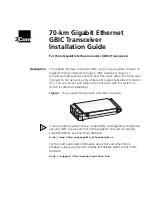
NEO-M9N - Integration manual
• The Save-on-Shutdown feature preserves
AssistNow Autonomous
data (more information about
the SoS feature: NEO-M9N Interface description [
3.9.4.4 Benefits and drawbacks
AssistNow Autonomous
can provide quicker start-up times (lower the TTFF) provided that data is
available for enough visible satellites. This is particularly true under weak signal conditions where it
might not be possible to download broadcast ephemerides at all, and, therefore, no fix at all would
be possible without
AssistNow Autonomous
(or A-GNSS). It is, however, required that the receiver
roughly knows the absolute time, either from an RTC or from time-aiding (see the
Interface
section
above), and that it knows which satellites are visible, either from the almanac or from tracking the
respective signals.
The
AssistNow Autonomous
orbit (satellite position) accuracy depends on various factors, such as
the particular type of satellite, the accuracy of the underlying broadcast ephemeris, or the orbital
phase of the satellite and Earth, and the age of the data (errors add up over time).
AssistNow Autonomous
will typically extend a broadcast ephemeris from three up to six days. The
CFG-ANA-ORBMAXERR item allows changing this threshold by setting the «maximum acceptable
modeled orbit error» (in meters). Note that this number does not reflect the true orbit error
introduced by extending the ephemeris. It is a statistical value that represents a certain expected
upper limit based on a number of parameters. A rough approximation that relates the maximum
extension time to this setting is:
maxError [m] = maxAge [d] * f
, where the factor
f
is 30 for data
derived from satellites seen once and and 16 for data derived for satellites seen multiple time during
a long enough time period (see the
There is no direct relation between (true and statistical) orbit accuracy and positioning accuracy.
The positioning accuracy depends on various factors, such as the satellite position accuracy, the
number of visible satellites, and the geometry (DOP) of the visible satellites. Position fixes that
include
AssistNow Autonomous
orbit information may be significantly worse than fixes using only
broadcast ephemerides. It might be necessary to adjust the limits of the navigation output filters
(CFG-NAV-OUTFIL_XXXX).
A fundamental deficiency of any system that prevents them from precise satellite orbit predictions,
are the unknown future events. Hence, the receiver will not be able to know about satellites that
will have become unhealthy, have undergone a clock swap, or have had a manoeuvre. This means
that the navigation engine might rarely mistake a wrong satellite position as the true satellite
position. However, provided that there are enough other good satellites, the navigation algorithms
will eventually eliminate a defective orbit from the navigation solution.
The repeatability of the satellite constellation is a potential pitfall for the use of the
AssistNow
Autonomous
feature. For a given location on Earth the (GPS) constellation (geometry of visible
satellites) repeats every 24 hours. Hence, when the receiver «learned» about a number of satellites
at some point in time the same satellites will in most places
not
be visible 12 hours later, and the
available
AssistNow Autonomous
data will not be of any help. Again 12 hours later, however, usable
data would be available because it was generated 24 hours ago.
The longer a receiver observes the sky the more satellites it will have seen. At the equator, and with
full sky view, approximately ten (GPS) satellites will show up in a one-hour window. After four hours
of observation approx. 16 satellites (i.e. half the constellation), after 10 hours approx. 24 satellites
(2/3rd of the constellation), and after approx. 16 hours the full constellation will have been observed
(and
AssistNow Autonomous
data generated for). Lower sky visibility reduces these figures. Further
away from the equator the numbers improve because the satellites can be seen twice a day. For
UBX-19014286 - R07
3 Receiver functionality
Page 40 of 95
C1-Public
















































